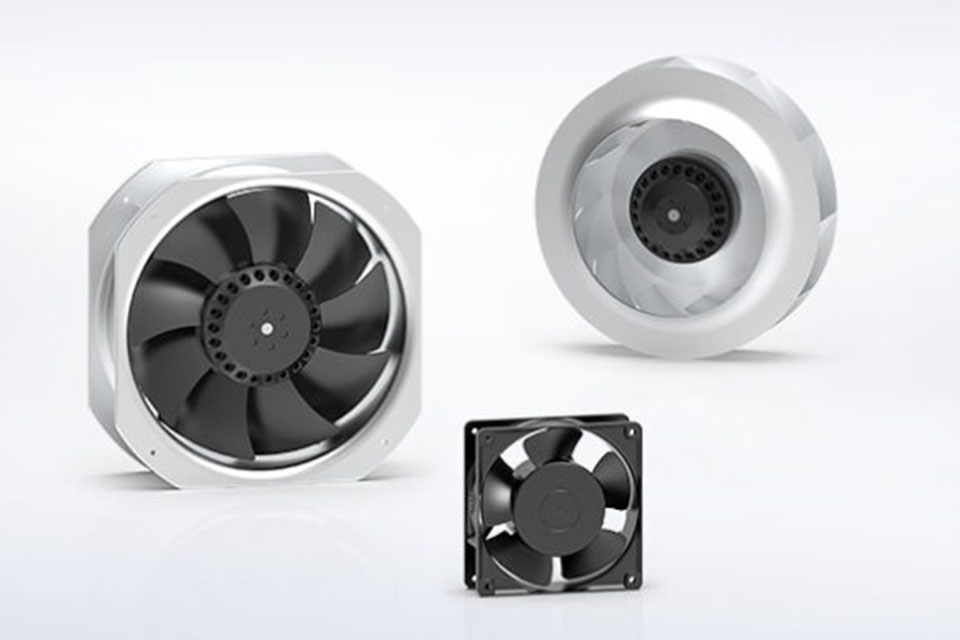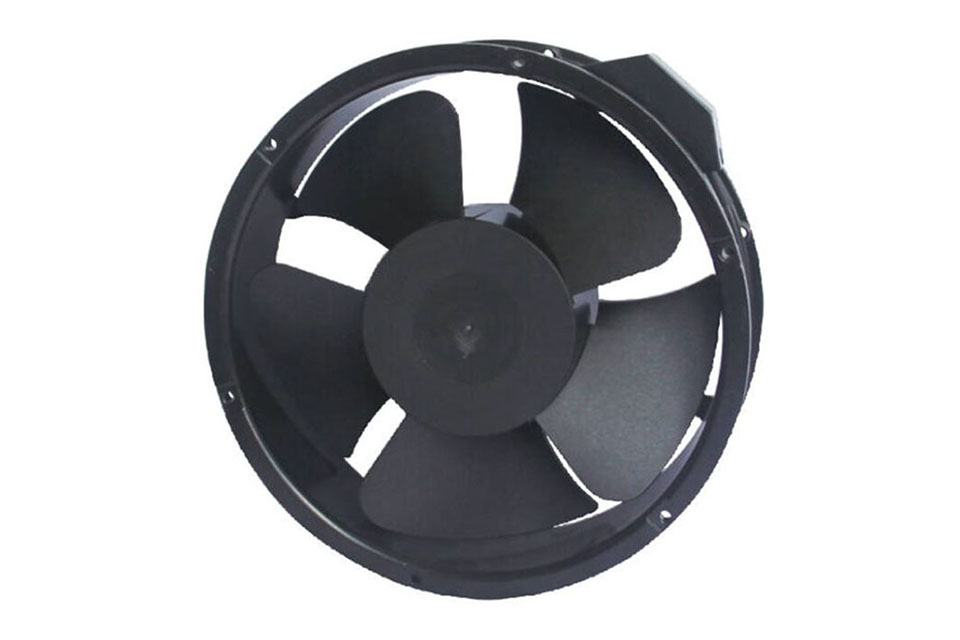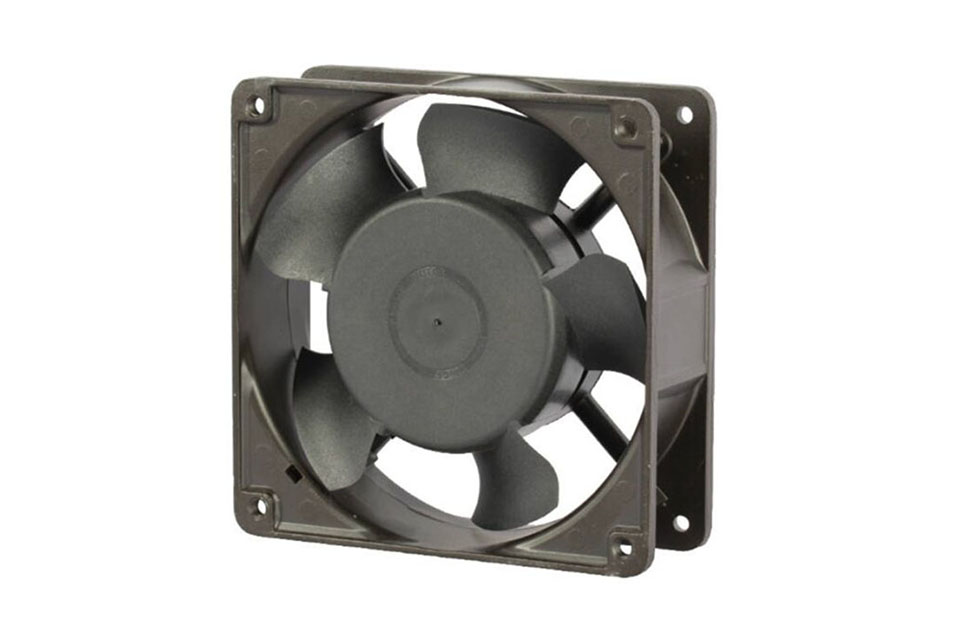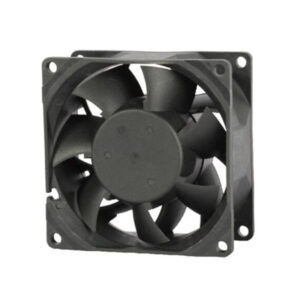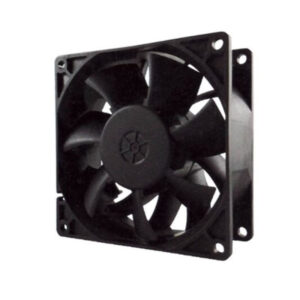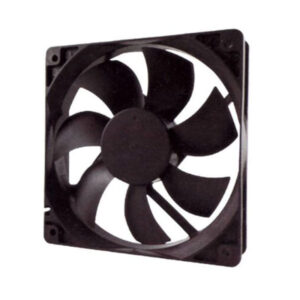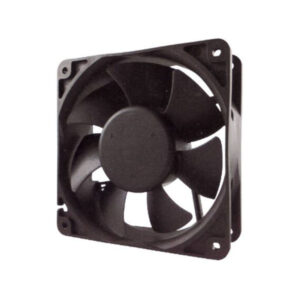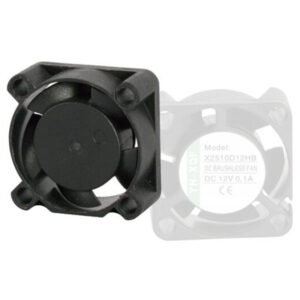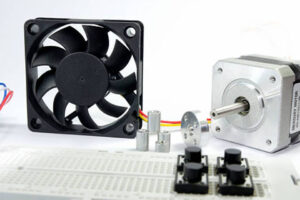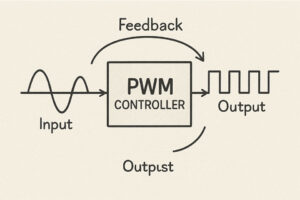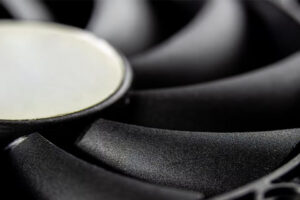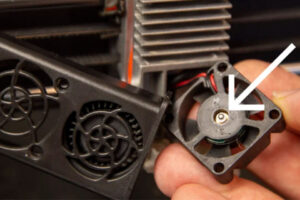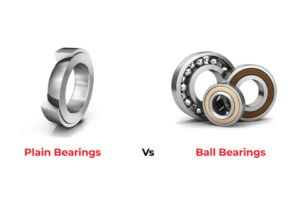Summary
When To Use The AC Fan refers to the strategic utilization of alternating current (AC) fans, which play a pivotal role in enhancing indoor comfort and improving energy efficiency within air conditioning systems. AC fans, which include various types such as ceiling, tower, floor, and wall-mounted fans, facilitate the circulation of cool air generated by air conditioning units, ensuring an even distribution of temperature in residential and commercial spaces. Their design and function allow for effective air movement, which can lead to significant energy savings, making them a crucial component in modern cooling solutions.
The notability of AC fans arises from their dual capability to augment cooling systems and operate independently in mild conditions. By circulating air, they create a wind-chill effect that allows occupants to feel cooler without lowering the room temperature, which can lead to reduced reliance on traditional air conditioning units. This versatility not only enhances comfort during warmer months but also assists in humidity management, making AC fans an integral part of effective indoor climate control strategies.
Prominent discussions around AC fans often center on their optimal use, including when to operate them in conjunction with air conditioning systems for maximum efficiency. For instance, using fans during cooler times of the day or adjusting thermostat settings can help lower energy costs while maintaining comfort levels. However, misconceptions persist regarding their ability to cool a room independently or their impact on energy consumption, highlighting the need for informed usage to achieve the best results.
Overall, understanding when and how to effectively use AC fans can lead to improved air quality, comfort, and energy efficiency, making them a valuable asset in managing indoor environments.
Table of Contents
Types of AC Fans
AC fans, also known as air conditioner fans, play a crucial role in the overall performance of cooling systems. They help distribute the cool air generated by air conditioning units throughout a space, ensuring comfort in both residential and commercial environments. There are several types of AC fans, each designed for specific applications and room sizes.
Common Types of AC Fans
Ceiling Fans
Ceiling fans are a popular choice for many households due to their efficiency and ability to circulate air effectively. They typically come with blades that range from 36 to 52 inches or more, making them suitable for various room sizes. For optimal performance, it is recommended that ceiling fans be installed with blades positioned 7 to 9 feet above the floor, 10 to 12 inches from the ceiling, and at least 18 inches from the walls. Additionally, ceiling fans can be set to rotate counterclockwise during the summer months to push cool air downward, creating a comfortable breeze.
Tower Fans
Tower fans are compact and sleek, making them ideal for smaller spaces where floor space is limited. These fans provide a strong airflow and can oscillate to distribute air over a wider area. Their vertical design allows them to fit into tight spaces while still providing effective cooling.
Floor Fans
Floor fans are versatile and can be moved easily from room to room. They can create a cross-breeze when placed strategically, especially in conjunction with open windows. For best results, it is advisable to position multiple floor fans to facilitate airflow throughout the space.
Wall-Mounted Fans
Wall-mounted fans are an excellent option for rooms with limited floor space. They can be installed at various heights to optimize airflow in a specific direction and are often used in combination with air conditioning systems to enhance cooling efficiency. These fans help maintain a comfortable environment without taking up valuable floor space.
Benefits of AC Fans
Using AC fans in conjunction with air conditioning systems can lead to significant energy savings. Fans can help distribute the cool air more evenly, allowing the thermostat to be set at a higher temperature without sacrificing comfort. This not only reduces energy consumption but also lowers electricity bills, making fans a cost-effective cooling solution.
Functions of AC Fans
AC fans serve several important functions in cooling systems, contributing to both comfort and efficiency within indoor environments.
Air Circulation and Distribution
One of the primary functions of AC fans is to circulate air throughout a space, creating a cooling effect. Unlike traditional air conditioning systems that lower room temperature, AC fans primarily facilitate air movement, enhancing the evaporation of moisture from the skin and providing a wind-chill effect that can make a person feel cooler even if the ambient temperature remains unchanged. The movement of air helps in distributing the cool air produced by air conditioning units, ensuring that it reaches all corners of a room.
Complementing Air Conditioning Systems
AC fans work in tandem with air conditioning systems to improve overall performance. They assist in pushing air over condenser coils, which helps in expelling heat from the system. This interaction not only aids in cooling but also enhances the efficiency of the air conditioning unit itself, as the fans help maintain optimal operating conditions.
Energy Efficiency
Using AC fans can also lead to energy savings. During mild weather conditions, running fans without the cooling function of the AC can be sufficient for comfort, allowing thermostat settings to be raised by 2-4 degrees Fahrenheit without sacrificing comfort. Additionally, fans that utilize EC (electronically commutated) technology consume up to 70% less energy compared to traditional AC fans while delivering similar airflow.
Seasonal Adjustments
The versatility of AC fans allows them to be effectively used in different seasons. During cooler months, fans can be set to operate in reverse to circulate warm air from heating systems. In spring and fall, they can help distribute cooler outdoor air, reducing the reliance on mechanical cooling and flushing out stale indoor air.
Mitigating Humidity
AC fans play a critical role in managing humidity levels. While they do not remove moisture from the air, the circulation they provide helps in creating a more comfortable environment by preventing the concentration of humidity in specific areas. This is particularly useful after activities like cooking or showering, where humidity tends to accumulate.
When to Use the AC Fan
Using the AC fan can significantly enhance indoor comfort, particularly during warmer months. Understanding when and how to utilize this feature can lead to energy savings and improved air circulation.
Continuous Operation
When the fan is set to “On,” it runs continuously, circulating and filtering air even when the air conditioning system is not actively cooling. This setting can be beneficial in improving air quality and providing consistent air movement throughout a space. Continuous operation is particularly useful when outdoor temperatures are moderate, as it can help maintain a comfortable indoor environment without engaging the AC unit.
Strategic Timing
The timing of AC fan usage can also influence energy efficiency. Running the AC fan during cooler parts of the day, such as early mornings or late evenings, allows for effective air circulation without the need for active cooling, reducing overall energy consumption. For example, utilizing the fan in conjunction with the AC system during peak heat hours can help distribute cool air more evenly, while minimizing the load on the air conditioning unit.
Temperature Adjustments
Adjusting the thermostat in conjunction with fan use can maximize comfort while minimizing costs. A recommended strategy is to raise the thermostat setting when you don’t need active cooling—this allows the fan to maintain air circulation without placing excessive demands on the AC unit. The ideal daytime thermostat setting is typically around 78°F when at home, and raising it to 80-82°F when away can lead to significant energy savings.
Seasonal Considerations
Seasonal changes also affect how and when to use the AC fan. During the summer, it is advisable to set the fan to complement air conditioning usage, particularly when temperatures rise above comfortable levels. In contrast, during milder winter months, the fan can assist with air circulation even when heating is required, helping to maintain an even temperature throughout the home.
Benefits of Using AC Fans
AC fans provide several advantages, making them a popular choice for cooling solutions, especially in environments with limited electricity supply. One of the primary benefits is their energy efficiency; AC fans can operate using up to 70% less power than traditional air conditioning systems while delivering comparable airflow. This reduced energy consumption not only helps lower electricity bills but also minimizes environmental impact, contributing to sustainability efforts.
Cost-Effectiveness
In terms of cost, AC fans typically have lower operating costs compared to traditional air conditioning units. While the initial investment for an air conditioning unit can be high, AC fans offer a more budget-friendly option with minimal maintenance requirements and lower monthly energy expenses. By using AC fans, homeowners can achieve a comfortable indoor climate without placing excessive pressure on their electrical systems, making it a safe and efficient cooling solution.
Complementary Use
AC fans can also be used in conjunction with air conditioning systems. By utilizing both, homeowners can enhance their cooling effectiveness while further reducing energy costs. This strategy allows for the air to circulate more effectively, improving overall comfort during hot weather.
Versatility and Ease of Use
Another advantage of AC fans is their versatility; they can be deployed in various settings, from residential to commercial spaces. They are relatively easy to operate and can be used independently or alongside other cooling methods, such as air conditioning units. Fans can create a breeze that helps evaporate sweat, making individuals feel cooler even when the air temperature remains high.
Tips for Optimal Use of AC Fans
AC fans can be a valuable tool for maintaining comfort in your home, especially during warmer months.
Strategic Placement
Positioning your AC fan effectively is crucial for maximizing airflow. Place fans near windows and doors to facilitate cross-ventilation, which helps in circulating fresh air and maintaining a comfortable indoor climate. This can also reduce the need for full air conditioning in mild weather conditions.
Choosing the Right Fan Mode
Understanding the different fan modes on your AC system can enhance your cooling experience. The “On” mode provides continuous air circulation, helping to eliminate hot and cold spots and improve indoor air quality by filtering dust and allergens. In contrast, the “Auto” mode only activates the fan when the AC is cooling the air, which can save energy but may not maintain consistent air circulation. The “Circulate” mode is beneficial during mild weather or in multi-level homes, as it helps evenly distribute air without the energy costs associated with full AC operation.
Adjusting Fan Speed
Fan speed is an important factor in energy efficiency and comfort. Higher speeds circulate air quickly, which can cool a room faster but may increase energy consumption and noise levels. Lower speeds are more energy-efficient and quieter, although they may take longer to achieve the desired temperature. Adjusting the fan speed according to your needs can optimize your AC’s performance and extend its lifespan.
Regular Maintenance
To keep your AC fan running efficiently, regular maintenance is essential. This includes checking for debris that may obstruct airflow and ensuring that the unit is installed level to prevent water leakage and operational issues. Additionally, consider scheduling professional tune-ups to maintain peak performance, especially before the summer months.
Monitor Humidity Levels
Humidity can significantly impact your comfort level. If humidity is high, using the dry mode on your air conditioner can be more effective than the cooling option. Smart thermostats or AC controllers can help monitor and automate indoor humidity levels, making it easier to maintain a comfortable environment.
By following these tips, you can maximize the effectiveness of your AC fan, improve indoor air quality, and maintain a comfortable home environment while keeping energy costs in check.
Common Myths about AC Fans
Air conditioning systems are often accompanied by a range of misconceptions regarding their fans and overall efficiency. Understanding these myths can help homeowners make more informed decisions about their cooling strategies.
Misconception: Fans Cool the Room
One prevalent myth is that ceiling fans or any type of fan can cool a room. In reality, fans do not lower the temperature of the air; rather, they create airflow that helps evaporate sweat from the skin, producing a wind-chill effect that makes people feel cooler. This principle of wind chill is similar to how outdoor conditions may feel colder due to wind, as moving air accelerates heat dissipation from the body. Thus, fans primarily cool the occupants rather than the space itself.
Misconception: Leaving Fans On When Not in Use is Beneficial
Another common belief is that leaving fans on in unoccupied rooms is a good way to maintain a cooler environment. However, this practice is inefficient, as fans do not change the temperature of the air and will only waste energy when no one is present to benefit from the airflow. To save energy, it is advisable to turn off fans when leaving a room unless they are used to create a cross-breeze with open windows.
Misconception: Fans Can Replace Air Conditioning
Some individuals might think that running a fan alone can substitute for air conditioning, especially during warmer months. While fans can make a space feel more comfortable by enhancing evaporative cooling, they cannot replace the cooling capability of an air conditioning unit, which actively lowers air temperature by removing heat from indoor spaces. In moderate temperatures, using a fan in conjunction with an AC can lead to energy savings, as it helps distribute the cooled air more effectively.
Misconception: Fans Increase Energy Bills Significantly
There is a belief that operating fans can significantly increase energy costs. However, compared to air conditioning units, fans consume considerably less electricity, making them a cost-effective alternative for enhancing comfort during warmer weather. Utilizing fans strategically, such as during cooler parts of the day, can help delay the need for mechanical cooling and reduce energy consumption overall.
By dispelling these common myths about AC fans, homeowners can better understand how to use these devices efficiently and effectively in conjunction with their air conditioning systems.
Maintenance and Care
To ensure the optimal performance and longevity of your air conditioning (AC) fan, regular maintenance is essential. This involves both professional servicing and self-performed tasks that contribute to the efficiency and effectiveness of the unit.
Professional Maintenance
It is advisable to schedule regular maintenance for your HVAC system with a qualified technician. This should typically be done at least once or twice a year, with spring maintenance focused on the cooling system and fall maintenance on the heating system. Professional technicians can identify and address potential issues that may go unnoticed, providing peace of mind and preventing costly repairs in the future.
During a professional visit, the technician will conduct thorough inspections of the system’s components, including the indoor and outdoor units, to ensure they are operating correctly and efficiently. This regular checkup is vital, especially before peak usage months, to maintain the unit’s performance.
DIY Maintenance
Homeowners can also undertake several preventive maintenance tasks to enhance their AC fan’s efficiency. One of the simplest tasks is regularly checking and cleaning or replacing the air filter, which is crucial for maintaining good airflow and air quality within the home. Filters should typically be replaced every one to three months, depending on usage and environmental conditions, such as the presence of pets or dust.
Additionally, keeping the vents and registers dust-free helps maintain efficient air circulation. Regularly cleaning the outdoor condenser coil and ensuring that it is free from leaves and debris can also prevent unnecessary strain on the unit.
Importance of Routine Care
Regular maintenance and care can significantly extend the lifespan of your AC system and reduce energy bills due to improved efficiency. By performing basic tasks yourself and scheduling professional maintenance, you can prevent many common issues associated with air conditioning units, ensuring they operate at peak performance year-round.

